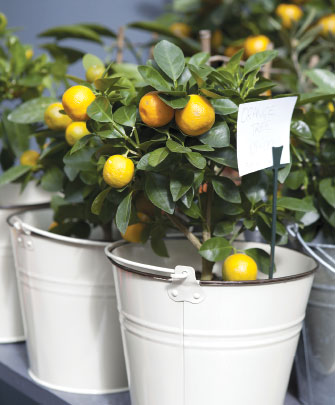A Garden in Flux
28 Jul 2012
Anchored by something old and many things new, this Mapleton Hill garden has transitioned alongside its owners.
By Carol Brock • Photos by WeinrauchPhotography.com If only tables could talk, instead of turn. If they could, the old sandstone-slab table in Sheila and Peter Dierks’ Mapleton Hill garden would have a few tales to tell.
- The century-old table in this Mapleton Hill "bliss spot" hosted Boulder's first kindergarten glass in 1921.

- Sheila’s son Brian made the wind chime from a carbon-dioxide tank and used Sheila’s rolling pin for the gonger.
The Invisible Web
As the kids grew up and eventually moved away, Sheila found her garden aging alongside her. “We don’t have the appetites and the full-time eaters that we had when we moved to this house. We had four kids at home then; we needed a big vegetable garden. Now we've got the Farmers’ Market, and I don’t need ’em both,” Sheila says. So the formerly magnificent vegetable garden transitioned into an equally awesome annuals garden, with the accompanying tasks of deadheading, mulching and watering. Then a life crisis forever impacted Sheila—and the garden. “I got run down by an ambulance in New York City, and it shattered my right elbow, which was my weeding elbow, and it was March.” Her elbow was rebuilt, but “I recognized it wasn’t my year for gardening.” Enter Sandy Swegel, a professional gardener who honed her skills for many years at Starts & Copeland. Sandy has cared for Sheila’s garden for the last eight years, and “she is phenomenal,” says Sheila, who often tosses out adjectives like phenomenal, fabulous, wonderful and gorgeous when referring to her garden. When Sandy came on board, Sheila was recuperating, running her book-publishing company, Woven Wordpress, and planning to return to graduate school. “Between the company, school, the accident—you know, your life changes. And with any major change in your life, because it’s all an invisible web, your garden changes.” With Sandy’s expertise, the garden transitioned into perennials and shrubs, with a few annual pots and an herb plot. “The basic plan at the moment is nice shapes, nice textures and low work,” Sheila says. “I’m crazy about the plants we have.” But don’t ask her to name them. “I’m not real crazy about names,” she admits. “I don’t worry about that a whole lot.” What she does think about is having a good mix of plants that bloom in all seasons, with pleasing colors and fragrances. A brief walk-through reveals hostas of all types, nicotianas, snow on the mountain, peonies, daphnes, a weeping cherry, columbines, veronicas, pulmonarias, hydrangeas, four o’clocks, honeysuckles, sweet peas, double-white geraniums, Harry Lauder’s walking stick, oxalises, cherry trees, barberry, variegated willows, a trumpet vine—“supposedly the biggest in Boulder County”—tulips, clematis, lavender, elderberry and a ground cover with “fabulous blue flowers that I don’t remember the name of,” Sheila says.
- The previous owners planted the scarlet maple in the lawn area, "which is in fact, the most beautiful scarlet maple in Mapleton Hill" in fall, Sheila says.
Her garden is also home to folk art, like the garden angel that hangs in the arbor and a fish her kids gave her that “swims” when the wind blows. She also has things her son Brian made for her, including a gigantic wind chime he crafted from a 7Up carbon-dioxide tank and gave to her one Mother’s Day. “He painted it, carved it and put a gong er in it, which is actually a rolling pin of mine,” Sheila says. He also gave his parents a housewarming present that sits in the front yard: a huge limestone boulder used for fence posts in Kansas that he bought from a farmer and had engraved with their last name.
Sheila, who is also an ordained Ecumenical Catholic priest, is conscious of Mapleton Hill’s close quarters and thus “shares” her garden with neighbors. “I think it’s interesting to have an urban garden, in which you live with the gardening of the people around you,” she says. “It pleases me.” So she shares flowerpots with neighbors along the alley and her clematis with neighbors to the east, as it forms the living fence between their homes.
Yet, of all the pleasant things in Sheila’s garden, Faye’s table is the most endearing to her. “There’s a lot of human memory associated with it,” she says, “and that’s special.”














